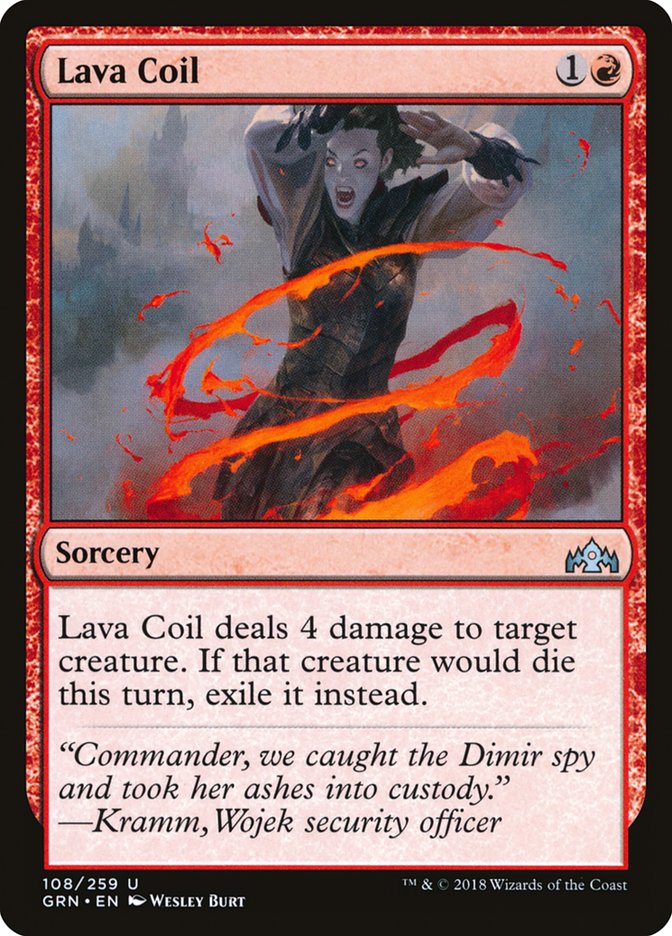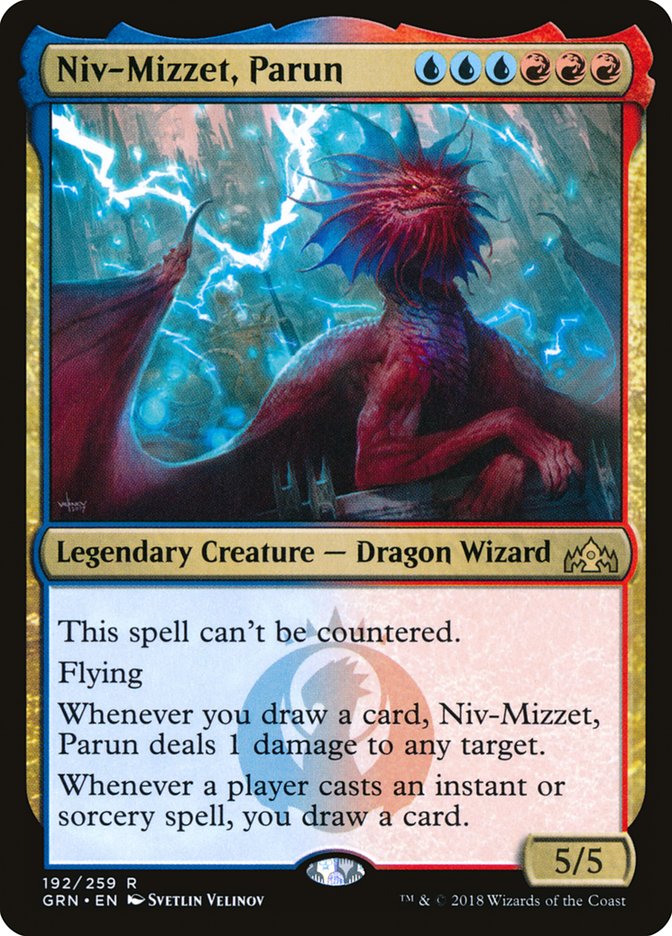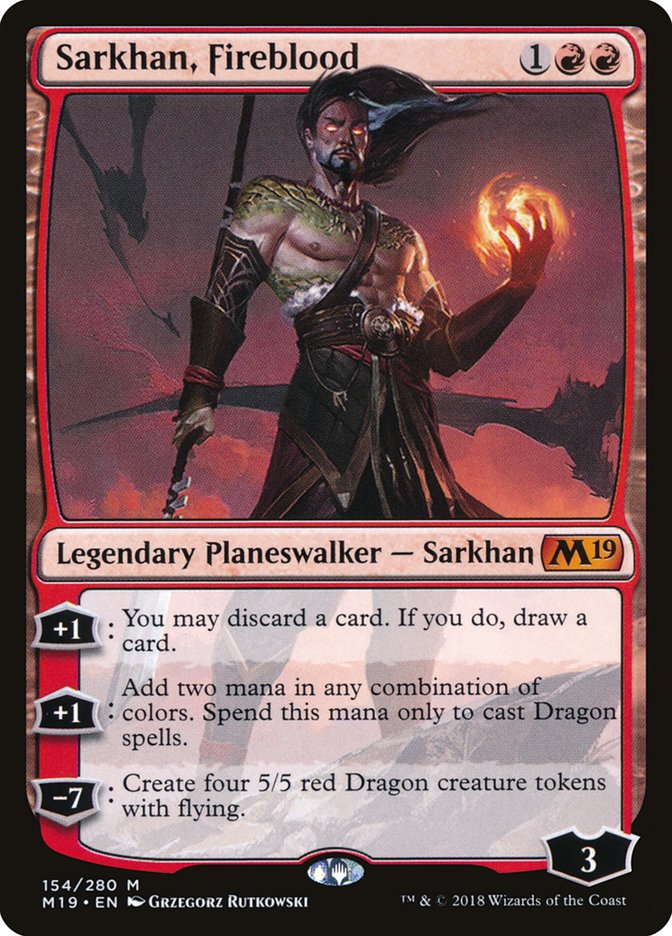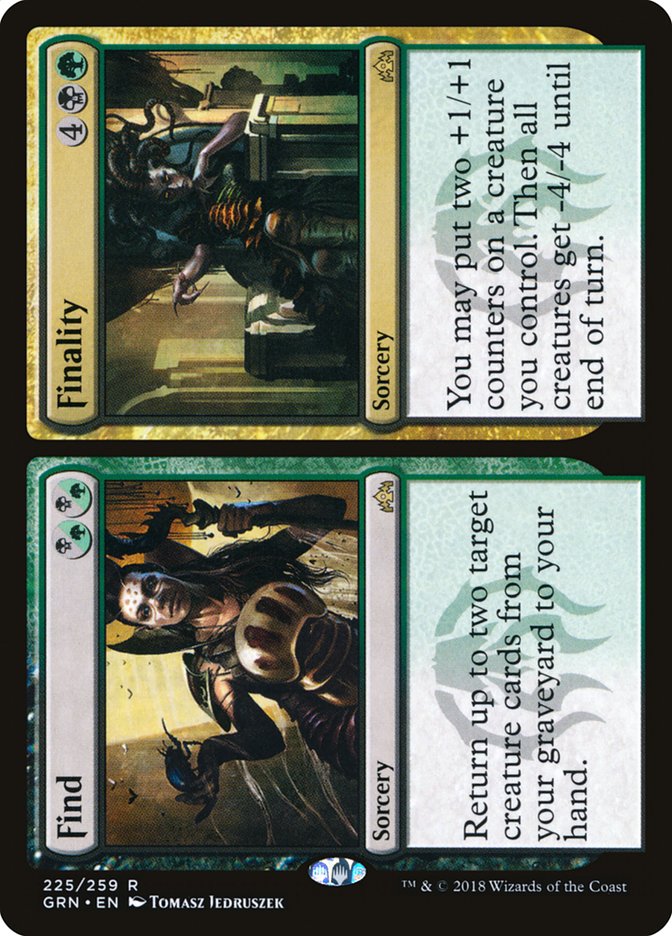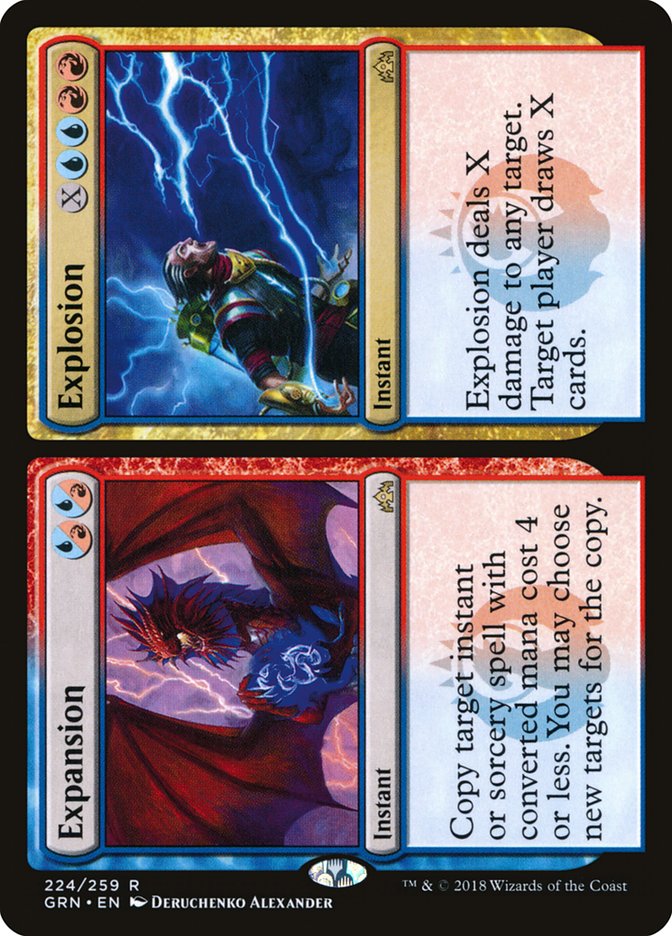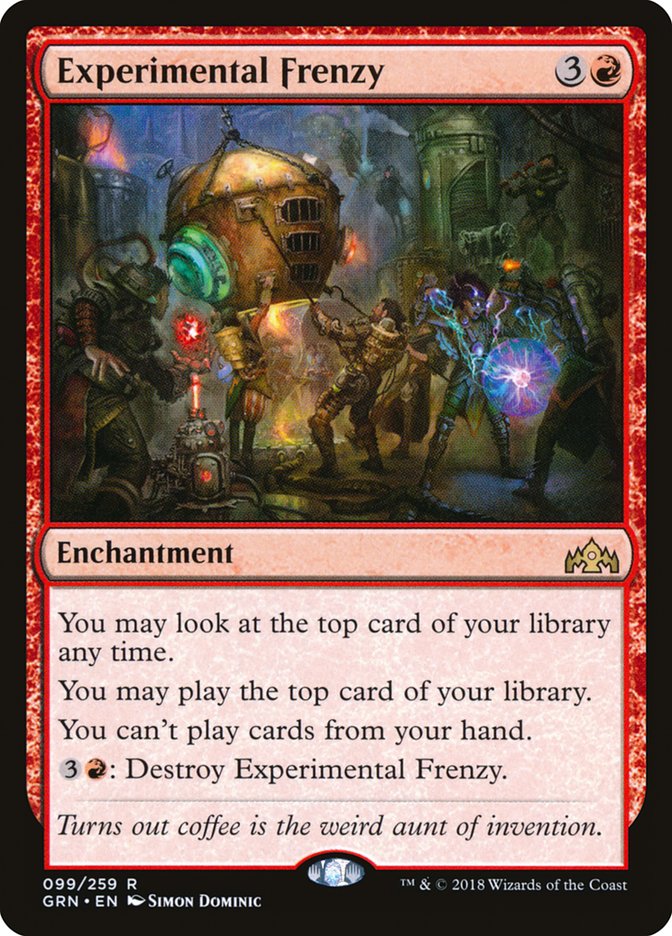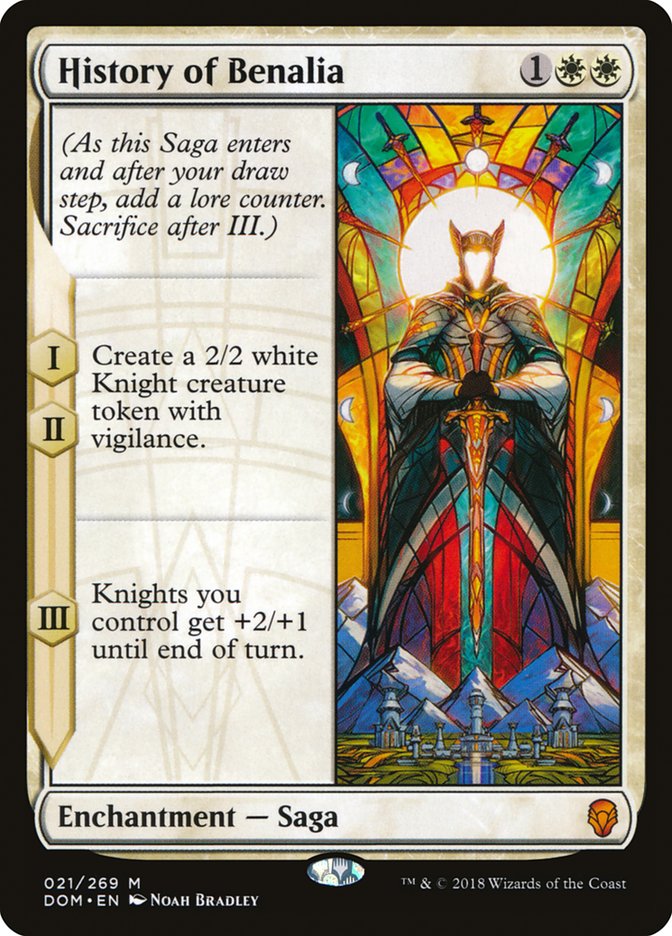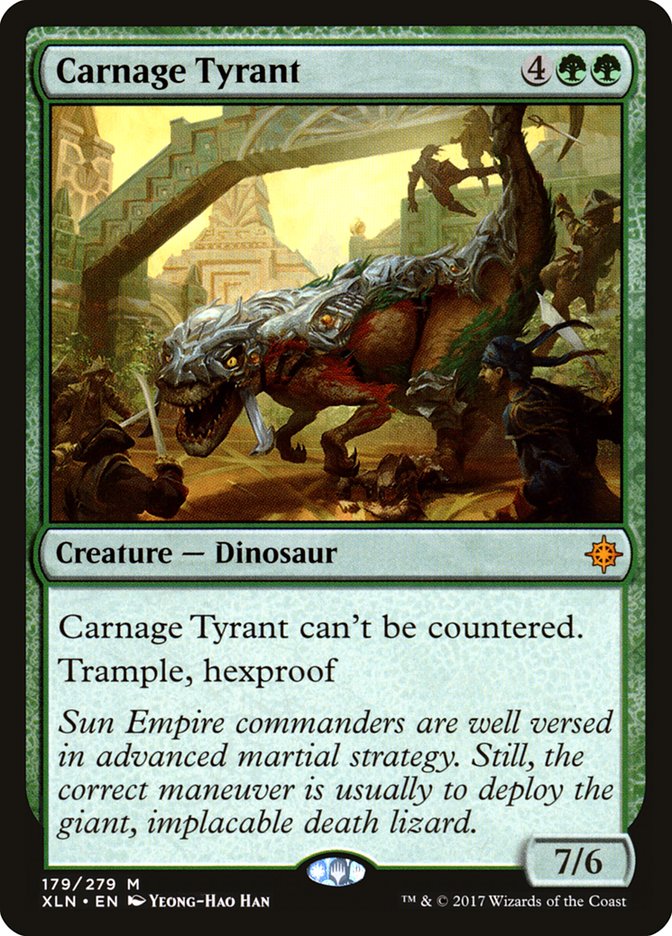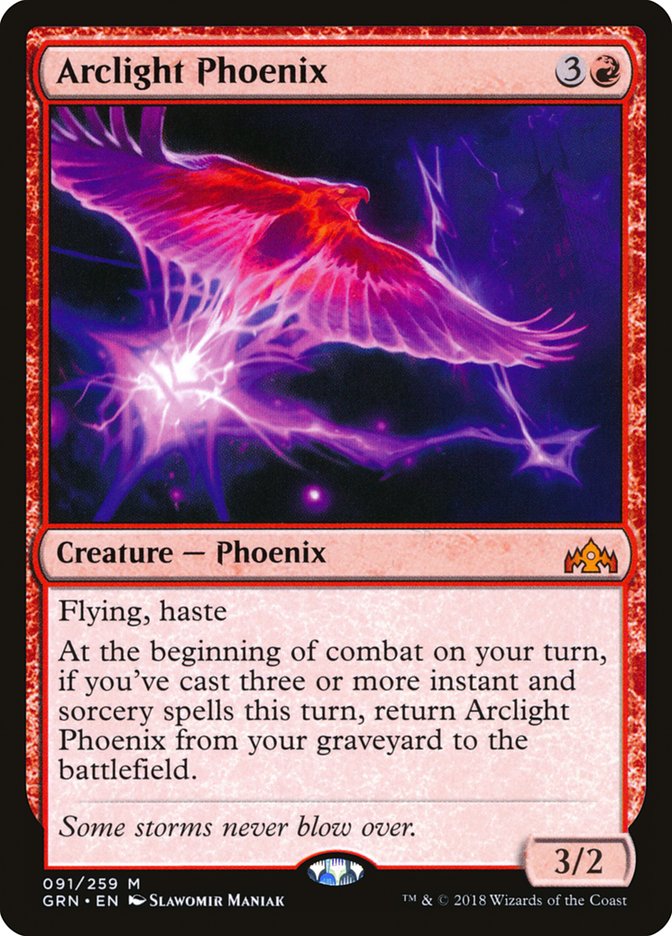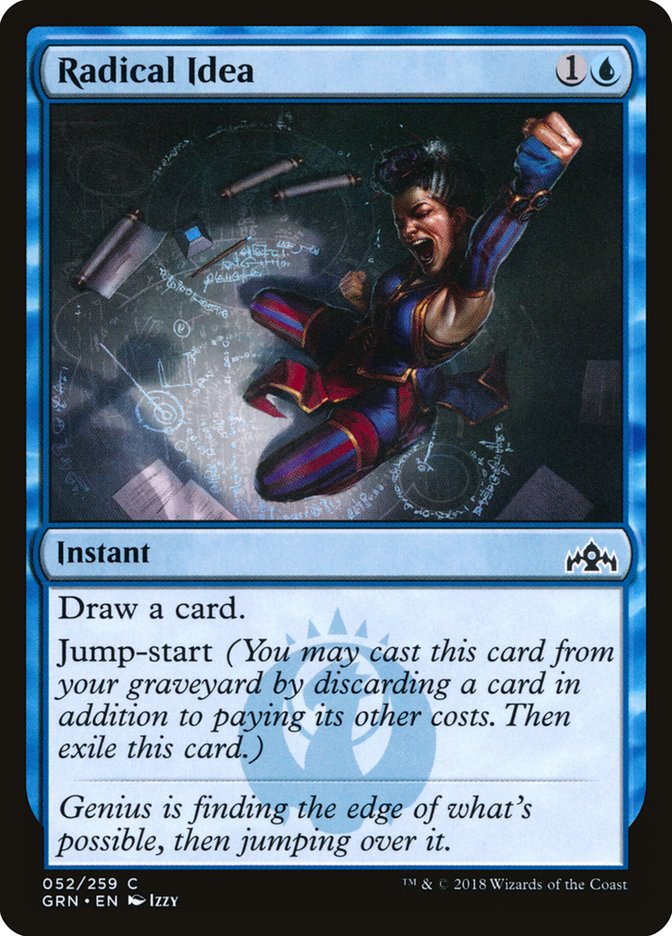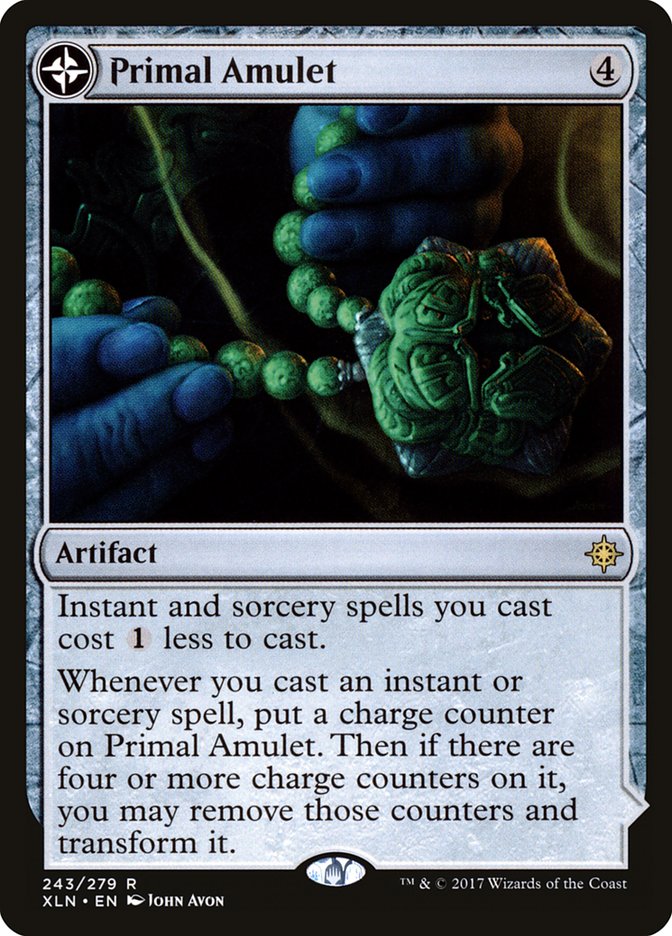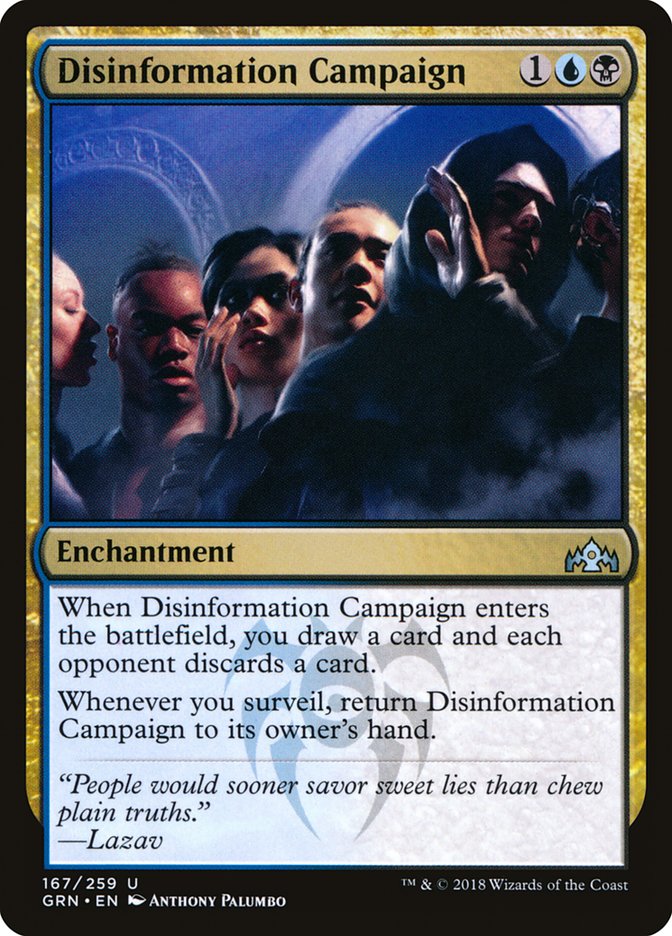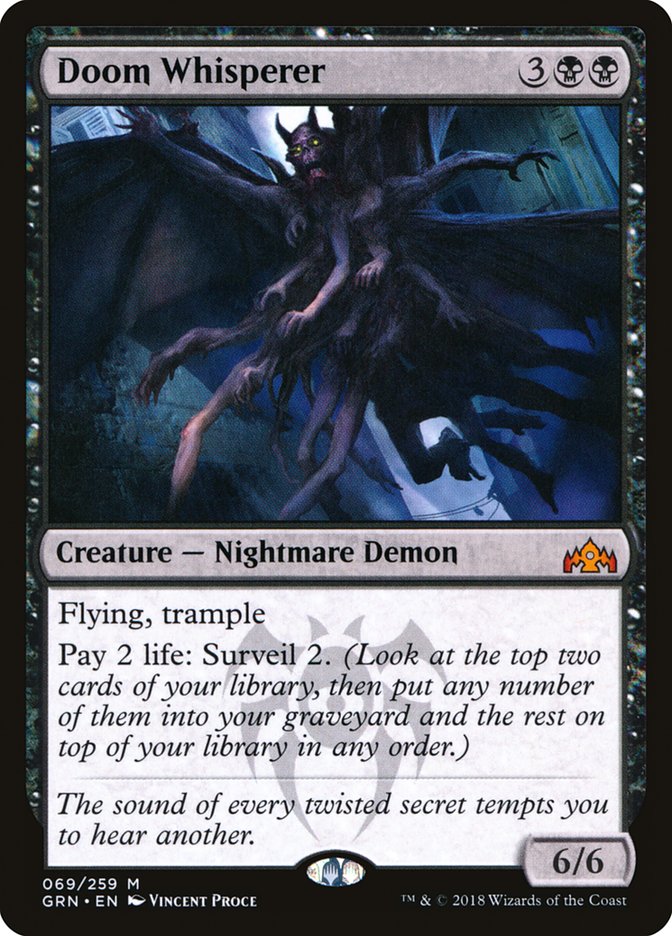Y’all, Standard feels pretty amazing right now.
While Golgari variants are starting to pick up a little steam and could easily be considered the “best deck,” the fact that you can build it twenty different ways and still be competitive is a very good thing. But that trend is not just a Golgari attribute. In fact, it seems like every color combination has two or more ways to build virtually every archetype, all revolving around a host of different cards!
Now, diversity in deckbuilding isn’t always a great indicator of a “good format.” You have to take a lot of other stuff into consideration. But primarily, you just have to ask yourself:
Are the games fun?
I will give that a wholehearted “yes.” It feels like most decks have the tools to play longer games, and virtually every color combination has the tools to interact early to prolong those games. Even Mono-Red Aggro, a deck that traditionally wins or loses within the first five turns or so, has the ability to play a significantly longer game (and win easily) thanks to cards like Risk Factor, The Flame of Keld, and Experimental Frenzy.
But what is surprising me the most is the fact that this format seems to be evolving at a pace I didn’t even think possible before. Within three days, it seems like there was an unwritten rule that every Golgari deck needed to be playing three or four copies of Midnight Reaper. And as a Jeskai pilot looking to brick off some of that card advantage early on via Deafening Clarion, it is incredibly annoying that Midnight Reaper has been showing up all over the place!
Not only that, but cards like Disdainful Stroke and Negate become significantly worse as your opponent starts to play threats that get under these cards. I thought I knew how to attack Golgari in the long game, using Negate and Disdainful Stroke to counter their more annoying threats in Vivien Reid and Vraska, Relic Seeker. But that just means I need to adapt myself, playing more removal that exiles their creatures so that they don’t get significant value out of Midnight Reaper.
I’ve been on the Lava Coil train for a while now, choosing it over both Lightning Strike and Seal Away for various reasons, but now I think it is a necessity. More than ever, you need to make sure you can clear out Midnight Reaper via Exile in the early turns so that your Deafening Clarion or Cleansing Nova later on doesn’t end up drawing them three or four cards!
But outside of just starting Lava Coil in that slot, I think there is a lot of data to parse when building a control deck. For starters, being light on threats, or lacking them entirely, is definitely a great start. Having any target for Ravenous Chupacabra or Cast Down or whatever removal spell they’re playing is actively dangerous, as turning on those cards as the game goes long is never what you want to be doing. The exception here is Teferi, Hero of Dominaria, since it is so powerful once it gets rolling and technically counts as a win condition.
I’ve seen many people advocating for this creature in the top-end of Jeskai:
Yes, Niv-Mizzet, Parun is a powerful card. As a finisher, it closes quickly and makes life hell for the opponent if you ever get to untap with it. It is also particularly punishing for a number of growing archetypes. However, when your six-mana threat gets instantly burned down by a Ravenous Chupacabra, Vivien Reid, or Vraska, Relic Seeker, you’re not gonna have a very good time. Trust me.
Now, hear me out, because there is one very big exception to this stance.
I have seen a number of decks revolving around the one-two punch of Sarkhan, Fireblood and Niv-Mizzet, Parun and I think those strategies are absolutely awesome. One of the reasons I am not in love with Niv-Mizzet as a finisher in a normal control strategy is that it is difficult to cast and then protect! Further, as the game starts to round out the sixth turn or so, your opponent is likely to have one or two removal spells that have been rotting in their hand the whole game. Sarkhan, Fireblood lets you cast Niv-Mizzet, Parun on the fourth turn. Or, alternatively, you can cast your big, bad Dragon on the sixth turn and protect it with counterspells! I’ve even seen some versions use Dive Down as a way to keep old Nivvy Boi around.
The truth is, we don’t actually know what is good and what isn’t yet when it comes to building strategies like these. When my opponent cast Dive Down on Niv-Mizzet, Parun, I chuckled a little bit. As the match progressed, I began to realize how afraid I was of my opponent actually having Dive Down and the mana up to protect their Niv-Mizzet, Parun. Things change quickly, and we can only go with the raw data presented, as well as what “feels” right when we’re testing out different ideas.
The Standard All-Stars
A few weeks ago, I wrote about how virtually every deck in Standard had access to some sort of engine. In some formats, the most precious resource is mana. In others, raw card advantage is more important. As you get deeper into Magic’s card pool, raw card advantage matters less because the overall card quality is higher. And as you progress into deeper card pools, the average converted mana cost of each deck gets lower and lower. At some point, you just want efficiency over any other attribute.
But in Standard, the cards we’re casting just don’t pack that same punch. We don’t have Force of Will or Faithless Looting or even Path to Exile. Instead, we’re left with inefficient removal spells to deal with creatures that are weaker than Death’s Shadow and the like. We cobble together a rag-tag group of hooligans to take down our opponent, all while valuing card advantage and resilience. And, at times, we find the gems that break us out of that mold. The unique cards. The engines. The all-stars of Standard.
This isn’t an engine per se, but it certainly gains some much-needed card advantage while having a spectacular back-end. The battlefield stalls that happen in Golgari mirrors are tough to slog through at times, and one of the easiest ways to break that stalemate is with a well-timed Finality while keeping one of your more important creatures alive!
If you’re playing Golgari this weekend, I highly recommend at least three copies between maindeck and sideboard. Even though there are a few lists running around without it, I just love the versatility. And after sideboarding, the value of Find goes up dramatically against opposing control decks, giving you a sort of inevitability alongside Carnage Tyrant. While one copy of Carnage Tyrant might not be enough to get the job done, the same can’t be said about the second, third, and maybe even fourth copy!
You all know this one’s a keeper. If you’re playing control with blue as one of your colors, you need a very good reason to not be playing white. Teferi, Hero of Dominaria is your answer to opposing planeswalkers. It’s your win condition. It’s your card-draw engine. It does everything you need it to do, and all it asks in return is that you play a few copies of Glacial Fortress.
I know I’ve talked at length about this card, but I think it needs to be said that Expansion // Explosion is one of the breakout cards in Guilds of Ravnica. While it takes some time to get going, any split card that has two useful halves is definitely a positive in my book. Copying an early removal spell is just fine most of the time, while having access to a virtual Sphinx’s Revelation that will literally end the game by itself is pretty busted.
If you are a control mage at heart and haven’t given Expansion // Explosion a go yet, I highly suggest taking it for a spin. You won’t be disappointed!
At this stage, everyone knows that red decks should be playing Experimental Frenzy either maindeck or sideboard. The card is just so powerful given enough time. And if you build your deck in the right way, Experimental Frenzy can yield three or more cards every single turn! While Experimental Frenzy looks disgusting in a Mono-Red Aggro deck, I can assure you that it’s patently absurd once you start building your deck to abuse it. Treasure Map, Wayward Swordtooth, Dryad Greenseeker, or just a bunch of creatures with explore are all ways you can manipulate the top of your library so you can get around a glut of lands.
Given enough time, a single Experimental Frenzy will bury just about any opponent. If they can’t kill you before you get two or three turns out of it, chances are that you should have the tools to clear their threats and find a few of your own.
There’s a saying that Ross Merriam has picked up over the last few weeks: the best combo in Standard is History of Benalia on the third turn, followed by another History of Benalia on the fourth. While the pump effect of History of Benalia isn’t always going to be a major deal, that damage output really starts to pile up when you produce even more Knights and threaten to repeat that effect one turn later.
As far as control decks go, History of Benalia is the card I’m most afraid of outside of an errant creature that dodges my removal suite (I’m looking at you, Adanto Vanguard). And if you’re on the play, virtually every deck in Standard is going to feel helpless about a double History of Benalia start. It’s just too much pressure too quickly, or it will just overload all the removal they have in hand by generating effective (or literal) two-for-ones. If you’re playing white and attacking, you should be playing four of this card. It works in token strategies. It works great as your primary beatdown plan. It even keeps you from having to run headfirst into a sweeper like Deafening Clarion because it generates so much aggression for so little mana!
As a control player, I really hate putting this one on the list. But seriously, if you’re playing green in your deck, you should consider some number of Carnage Tyrant in the 75. Unlike the other cards on this list, playing three or four isn’t always ideal. It is rather expensive, after all. However, Carnage Tyrant is good against virtually every deck in the format.
1) It helps close games when you’ve stabilized against Mono-Red Aggro.
If you let the red decks go on for too long, they’ll just burn you out. You need reliable ways to actually kill them. Luckily, all of the five- and six-mana spells at your disposal should do just fine. This isn’t the matchup where Carnage Tyrant shines, but it certainly closes games quickly once you’ve taken control.
2) It gives control major headaches.
As a control player, I will say that I’ve beaten Carnage Tyrant a few times. Whether that means casting two copies of Deafening Clarion (or copying one with Expansion) or using Cleansing Nova, you find your ways. However, you’re still presenting a threat that’s pretty tough for them to beat, even if they are super far ahead.
Now imagine you’re playing control against a deck featuring Carnage Tyrant and Find // Finality. If they start using Find to return Carnage Tyrant to the battlefield, you’re gonna be in a world of hurt. Plus, if they’re pressuring you in the early turns, there’s a good chance you don’t have the right sweeper at the right time to stop Carnage Tyrant from eating you alive! It’s all about forcing your control opponents into tough spots, and Carnage Tyrant dodges counterspells and traditional spot-removal.
3) It’s one of the best things you can do in the mirror, along with Finality of course.
In the Golgari mirrors, creatures trade off and battlefields will ultimately come to a stalemate. At some point, someone casts a planeswalker or spell that requires a very specific answer. Most of the time, Assassin’s Trophy or Vraska’s Contempt will deal with that threat. However, Carnage Tyrant dodges all the removal that black can throw at it, just so long as you have one or two other bodies on the battlefield to dodge Edict effects like The Eldest Reborn. And if you’re playing a deck with a bunch of explore creatures, it shouldn’t be too tough to protect your Carnage Tyrant from their only method of interaction.
Once the battlefield gums up, Carnage Tyrant will be the biggest creature around. It will be the only creature that’s really safe from anything. At that point, your goal should be to do one of two things: acquire more Carnage Tyrants, or make sure you can deploy one or more creatures after you cast Finality. And it doesn’t have to just be Finality. You can sideboard Ritual of Soot, Golden Demise, or a host of other cards that hose the small blockers in these grindy mirrors.
Protect the Queen.
The Rabbit Hole
Aside from these standouts, there are plenty of other two-card combinations to build your deck around. As I mentioned before, this format has been insanely fun to explore. I’ve been streaming with a lot of 5-0 decks, as well as brewing my own and seeing how well (or poorly) they work. Obviously, I lean toward Jeskai colors, but one of my first brews ended up putting multiple people into the Top 16 of the first Magic Online PTQ (Gruesome Menagerie). I’ve been, as the kids say, “going hard in the paint.”
Here are some sweet two-card combos that I’ve tried, and still want to keep building decks around, as well as some relatively polished lists that you could pick up for Grand Prix New Jersey!
Creatures (12)
Lands (22)
Spells (26)

While Radical Idea isn’t particuarly powerful by itself, it plays an important role in helping trigger Arclight Phoenix while also acting as a discard outlet to put it where it belongs: in the graveyard. But that isn’t the only thing that pairs well with Radical Idea. What else can we pair it with?
Planeswalkers (4)
Lands (23)
Spells (33)
- 4 Opt
- 2 Negate
- 1 Banefire
- 4 Lightning Strike
- 4 Primal Amulet
- 2 Blink of an Eye
- 4 Radical Idea
- 4 Deafening Clarion
- 4 Chemister's Insight
- 2 Expansion
- 2 Beacon Bolt
Sideboard

Both of these cards are great by themselves but are particularly brutal when paired together. Doom Whisperer was impressive in my early testing, though I’ve been less enthusiastic about it with many Golgari decks relying on four copies of Ravenous Chupacabra. Luckily, Disinformation Campaign can help clear out your opponent’s hand before casting Doom Whisperer to close things out. Plus, I’ve really been wanting to find a reason to pair Nicol Bolas, the Ravager with Disinformation Campaign!
Creatures (8)
Lands (25)
Spells (27)

I talked about this one a bit already, but I just wanted to make sure y’all know that there’s a good chance my Grand Prix New Jersey deck features four copies of both of these in my maindeck. This is a great starting point from Magic Online.
Creatures (4)
Planeswalkers (4)
Lands (25)
Spells (27)

These are some of the more interesting decks I’ve found and tested with over the last few weeks. Of course, there are still Selesnya Tokens, Boros Angels/Aggro, Esper Control, and a number of other “established” archetypes that we’ve seen be successful on the SCG Tour as well as Magic Online. Well, as established as any deck can be after a handful of weeks.
The truth is that I don’t know what I’m playing yet, because this format is so complex and so deep that I don’t think anyone should know what they’re playing when they have more time to test! As I write, I still have four more days to figure things out! Chances are I’ll be playing some sort of Izzet strategy, but there’s still some time left to figure out which build. It has been quite some time since I’ve had so many options to choose from, both in archetypes as well as card choices in said archetype. I mean, it’s kind of ridiculous that I can build three different Izzet decks that function way differently from each other without even trying, right?
As of right now, I’m not happy with Jeskai’s position in the metagame. A lot of decks are growing rather hostile toward you, and many creature-based decks are exploiting some holes in your removal suite. With that said, your removal can change, and it should change as the threats do. And while I’ve advocated against both Settle the Wreckage and Seal Away in the past, as well as a reliance on such cards as Azor’s Gateway, I think this version might be the perfect foil to where Standard is at right this moment.
Planeswalkers (4)
Lands (27)
Spells (29)

Well, that’s all I have for you today. I hope that you can take what you’ve learned here and apply it to whatever strategy you want to play yourself! And while the Top 8 in New Jersey won’t likely be eight different archetypes, I could easily see eight different strategies that share some similarities. Even if there are three or four Golgari decks in the Top 8, I expect them all to be built with a different plan in mind.
I’m very much looking forward to this tournament, but I’m so deep in the rabbit hole that I wish someone would just pull me out and hand me “the deck.” I have two days of testing left. Let’s make the best of them! You can find me streaming my testing process on Twitch.


